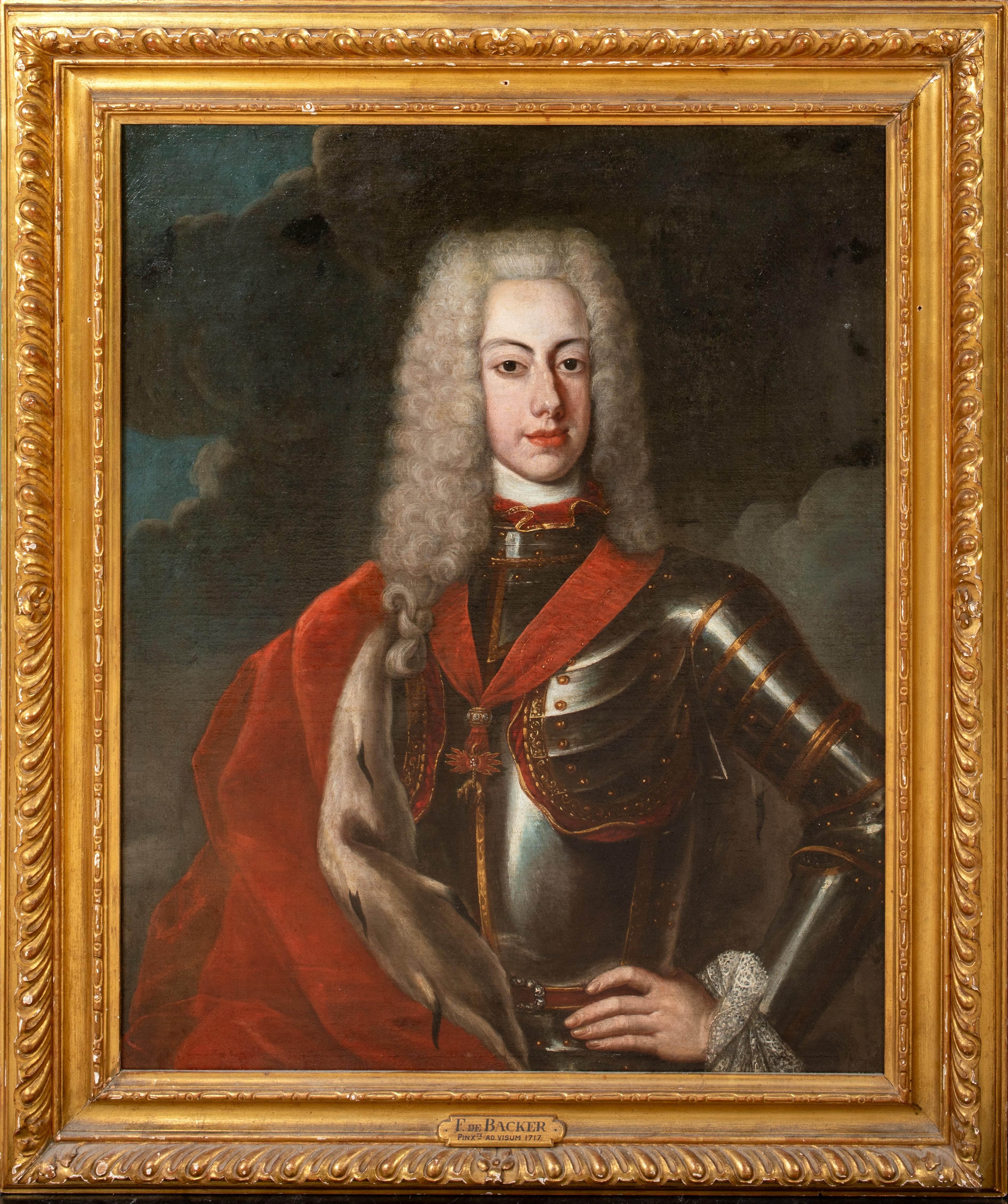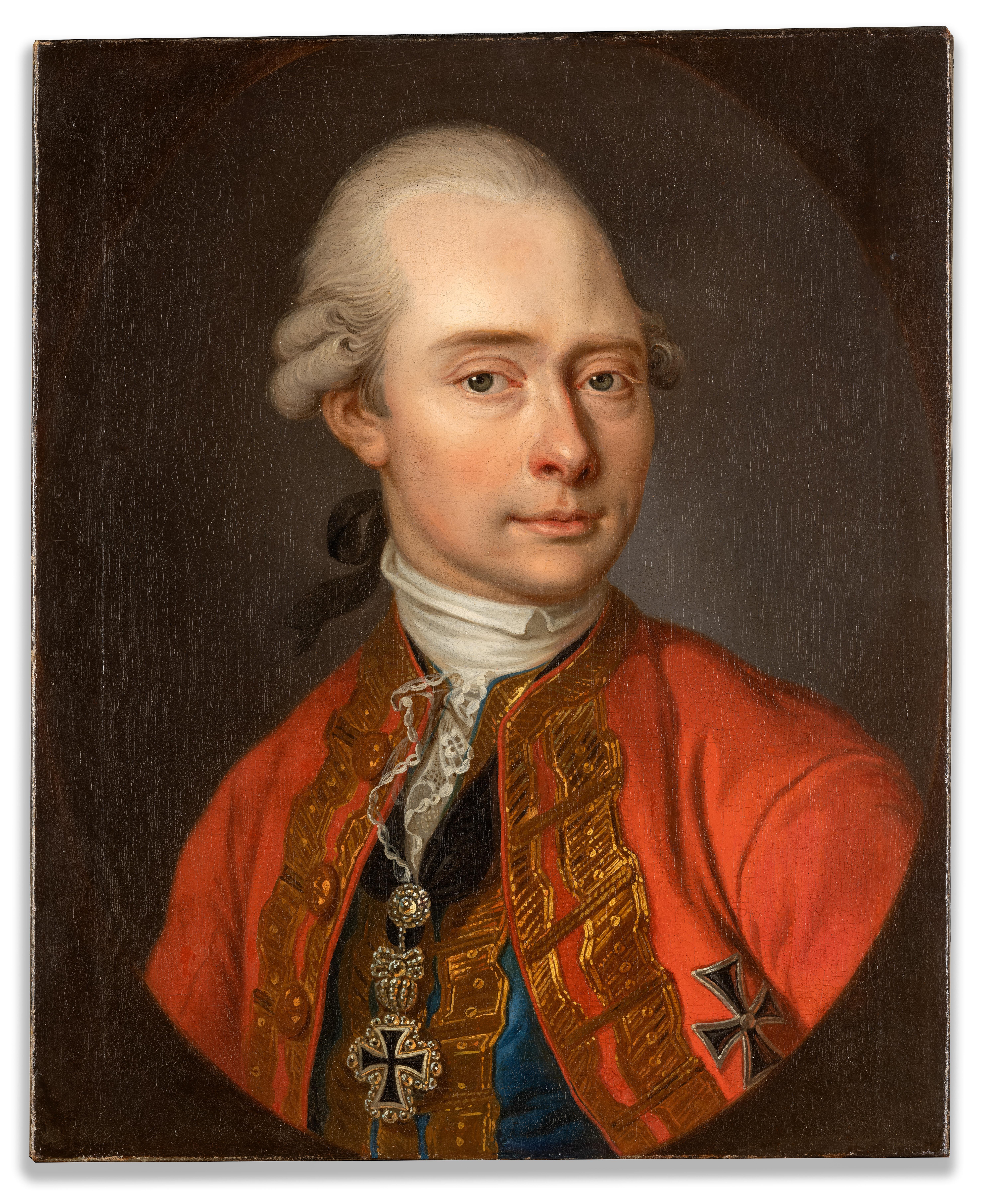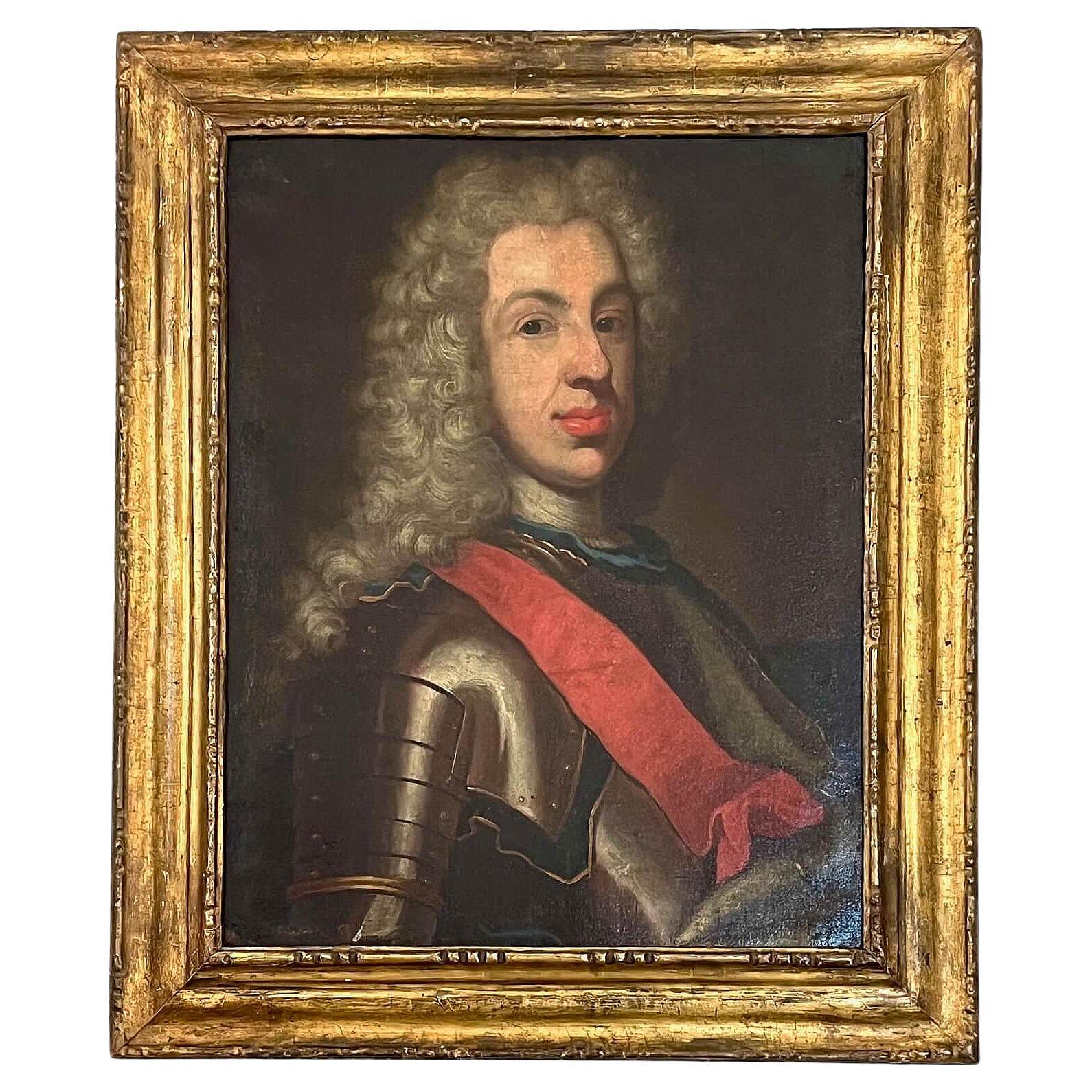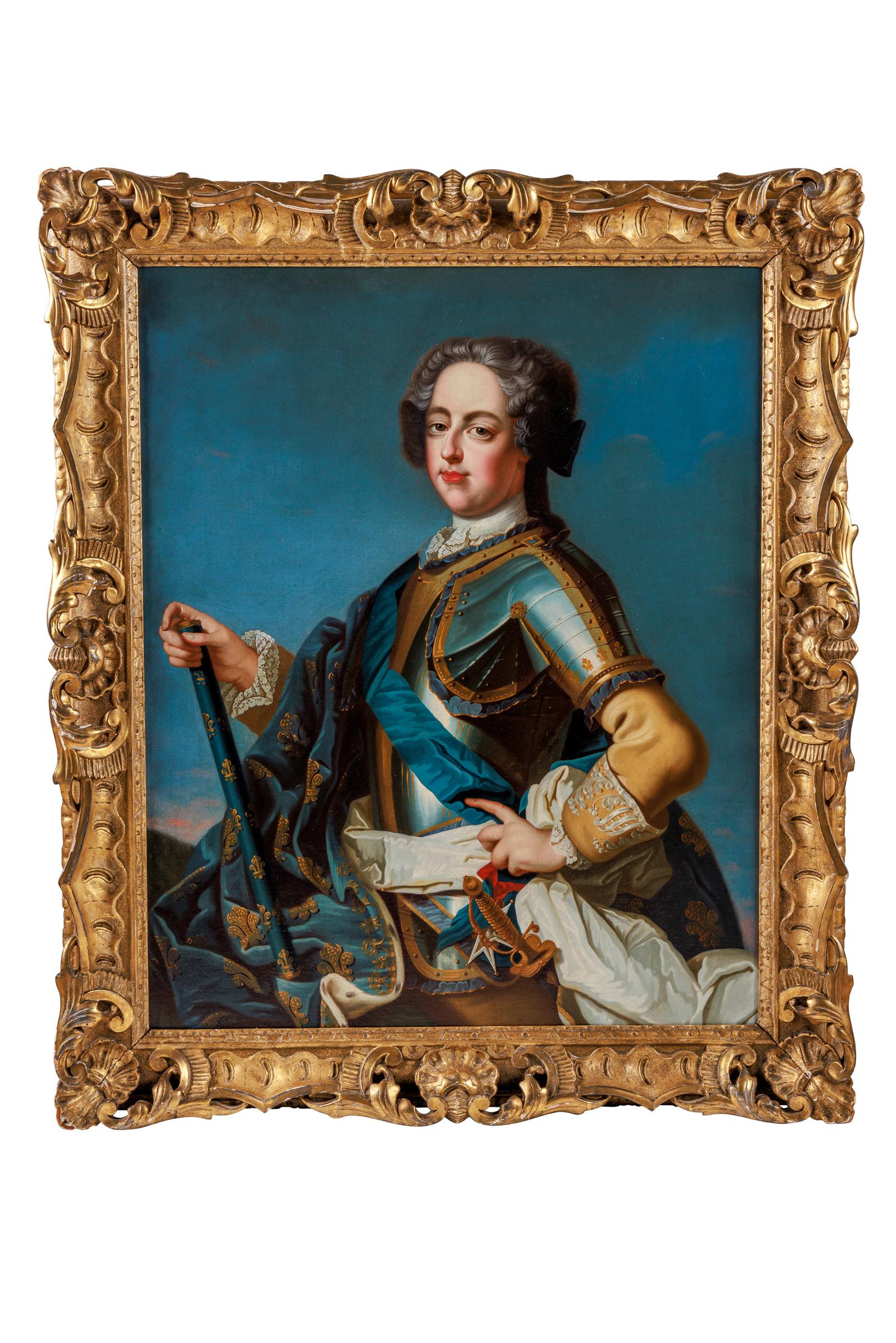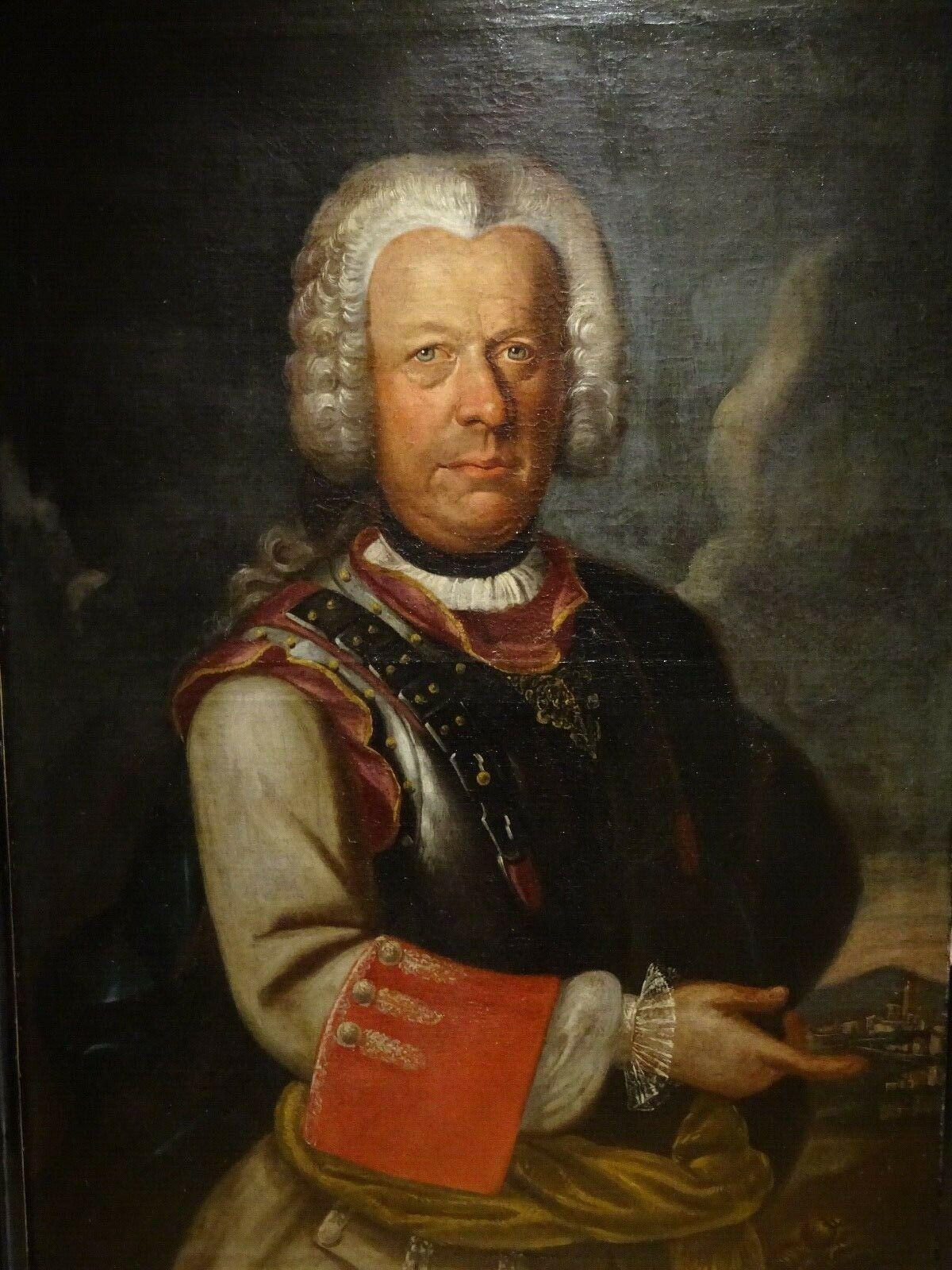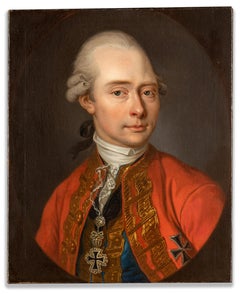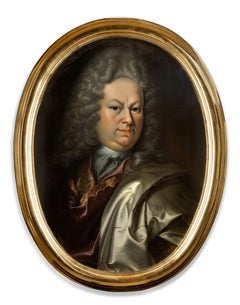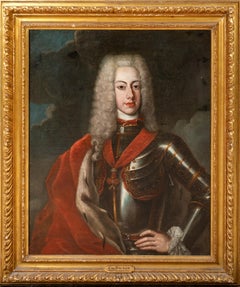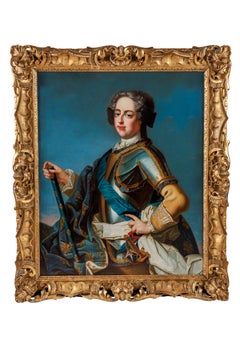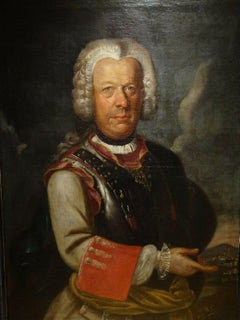Items Similar to Portrait after Franz Josef Winter, Clemens August of Bavaria, Archbishop Cologne
Want more images or videos?
Request additional images or videos from the seller
1 of 20
UnknownPortrait after Franz Josef Winter, Clemens August of Bavaria, Archbishop Colognecirca 1720
circa 1720
$20,195.67
£15,013.14
€17,000
CA$27,780.15
A$30,946.47
CHF 16,323.77
MX$375,235.50
NOK 207,661.95
SEK 193,450.26
DKK 129,484.52
About the Item
Clemens August Ferdinand Maria Hyazinth, Duke of Bavaria (* August 16, 1700 in Brussels; † February 6, 1761 in Koblenz) was as Clemens August I from 1723 to 1761 Archbishop of Cologne and thus at the same time Elector of the Holy Roman Empire, sovereign of the associated archdiocese as well as the tributary lands of Recklinghausen and Westphalia. In addition, he was Legatus natus of the Holy Apostolic See in Rome and Archchancellor of Imperial Italy. Furthermore, he combined the offices of Grand Master of the Teutonic Order (1732-1761), Prince-Bishop of Regensburg (1716-1719), Paderborn (1719-1761), Münster (1719-1761), Hildesheim (1724-1761) and Osnabrück (1728-1761) as well as other ecclesiastical dignities.
Clemens August, contemporarily called Monsieur des cinq églises (Lord of the Five Churches) because of his episcopal sees, was one of the most important ecclesiastical princes of the empire of his time. His foreign policy was characterized by the fact that he frequently changed his alliance partners. He is remembered by posterity as a pomp-loving rococo prince who maintained a magnificent court and had numerous castles built or remodeled.
This portrait is close to the works of the court painter Franz Joseph Winter.
- Creation Year:circa 1720
- Dimensions:Height: 34.65 in (88 cm)Width: 27.56 in (70 cm)
- Medium:
- Movement & Style:
- Period:
- Condition:
- Gallery Location:Greven, DE
- Reference Number:1stDibs: LU155029194752
About the Seller
4.8
Gold Seller
Premium sellers maintaining a 4.3+ rating and 24-hour response times
Established in 2011
1stDibs seller since 2021
29 sales on 1stDibs
Typical response time: 4 hours
- ShippingRetrieving quote...Shipping from: Greven, Germany
- Return Policy
Authenticity Guarantee
In the unlikely event there’s an issue with an item’s authenticity, contact us within 1 year for a full refund. DetailsMoney-Back Guarantee
If your item is not as described, is damaged in transit, or does not arrive, contact us within 7 days for a full refund. Details24-Hour Cancellation
You have a 24-hour grace period in which to reconsider your purchase, with no questions asked.Vetted Professional Sellers
Our world-class sellers must adhere to strict standards for service and quality, maintaining the integrity of our listings.Price-Match Guarantee
If you find that a seller listed the same item for a lower price elsewhere, we’ll match it.Trusted Global Delivery
Our best-in-class carrier network provides specialized shipping options worldwide, including custom delivery.More From This Seller
View AllPortrait of a noble Gentlemen, Max Franz of Austria, Archduke, Meytens, Habsburg
Located in Greven, DE
Portrait of Max Franz as coadjutor of the Teutonic Order
Oil on canvas, 54 x 45 cm
Maximilian Franz of Austria
Austrian Archduke Maximilian II. Franz, was Grand Master of the Teutoni...
Category
18th Century Rococo Portrait Paintings
Materials
Canvas, Oil
Portrait Johann Theodor Bavaria, Son of Prince Elector, by Joseph Vivien, Rococo
By Joseph Vivien
Located in Greven, DE
Portrait of Johann Theodor of Bavaria (1703-1763)
by Joseph Vivien
Johann Theodor of Bavaria (* September 3, 1703 in Munich; † January 27, 1763 in Lièg...
Category
18th Century Rococo Portrait Paintings
Materials
Canvas, Oil
Portrait of a Gentleman, Halung, Court Painter Schildbach, Gotha, Convex Copper
Located in Greven, DE
Christian Schildbach was a very talented artist with his own style.
Art painter in Plauen, then court painter in Dresden; around 1706 art painter in Vienna, also active in Bamberg (...
Category
18th Century Baroque Portrait Paintings
Materials
Copper
J Haid, Martin Van Meytens, Engraving, Portrait Count Ferdinand Plettenberg
Located in Greven, DE
Johann Jakob Haid (1704-1767), engraver
Johann Stenglin (1715-1770), engraver
Martin van Meytens (1695-1770), inventor
Ferdinand Count of Plettenber...
Category
18th Century Baroque Portrait Prints
Materials
Engraving
Portrait of Emperor Ferdinand I. Prague School, 17th Century, Copper, Old Master
Located in Greven, DE
Unknown artist
Prague School
Portrait of Emperor Ferdinand I. (1503-1564)
17th century
Oil on copper, 21,3 x 16,8 cm
Provenance:
Private collection, Pennsylvania, until 2016
This work by an unknown artist is a semi-portrait in predominantly brown-green tones.
brown-green tones of the emperor Ferdinand I, who was crowned emperor in 1558.
Ferdinand I of the Habsburg dynasty, who was crowned emperor in 1558.
in a suit of armour lavishly decorated with gold ornaments.
The portrait of Ferdinand...
Category
17th Century Baroque Portrait Paintings
Materials
Copper
$17,823 Sale Price
40% Off
Self Portrait of Schildbach, Court Painter Schildbach, Gotha, Convex Copper
Located in Greven, DE
Christian Schildbach was a very talented artist with his own style.
Art painter in Plauen, then court painter in Dresden; around 1706 art painter in Vienna, also active in Bamberg (...
Category
18th Century Baroque Portrait Paintings
Materials
Copper
You May Also Like
Portrait Holy Roman Emperor Charles VI (1685-1740), 18th Century Franz De Backer
Located in Blackwater, GB
Portrait Holy Roman Emperor Charles VI (1685-1740), 18th Century
bv Franz De Backer (1680-1749)
Large early 18th Century portrait of Charles VI, ruler of t...
Category
18th Century Portrait Paintings
Materials
Canvas, Oil
Portrait of Louis George, Margrave of Baden-Baden, Oil on Canvas, Circa 1725
Located in Kinderhook, NY
A circa 1725 oil on canvas portrait of Louis George Simpert, as Hereditary Prince, the future Margrave of Baden-Baden (Deutsch: Ludwig Georg Simpert, Markgraf von Baden-Baden) portrayed one-quarter length in powdered wig and wearing ceremonial armor and crimson sash newly fitted in a period molded giltwood frame with bead-and-reel inner border from the Eli Wilner collection. Canvas measures 24.5" x 19.25". A related, but later portrait of circa 1735, attributed to the same unknown painter, is held in the collection of Lichtenthal Abbey, Baden-Baden.
Biography:
Louis George or Ludwig Georg Simpert, Margrave of Baden-Baden, born June 7, 1702 at Ettlingen Palace was the son of Louis William, Margrave of Baden-Baden and his wife, Princess Sibylle of Saxe-Lauenburg. Hereditary Prince of Baden-Baden from birth, at the death of his father in 1707, he succeeded as Margrave of Baden-Baden at the age of four. As such, his mother was regent of Baden-Baden until he reached his majority on 22 October 1727 at the age of 25. He married Maria Anna of Schwarzenberg April 8, 1721 at Český Krumlov Castle. The couple were the parents of four children, of whom only one survived infancy. After the death of the first Maria Anna in 1755, he married the Princess Maria Anna Josepha of Bavaria on July 10, 1755; the daughter of Charles VII, Holy Roman Emperor and his Austrian wife Archduchess Maria Amalia. The second marriage remained childless. Due to his passion for hunting instead of military service, he became known as "Jägerlouis", "hunter Louis", a play on his father's nickname of Türkenlouis ("Turk Louis") due to his famous heroics against the Turkish army at the Siege of Vienna...
Category
Antique Early 18th Century German Baroque Paintings
Materials
Canvas, Wood, Giltwood, Paint
After Jean-Baptiste Van Loo, Portrait of King Louis XV of France (1710-1774)
Located in Queens, NY
After Jean-Baptiste Van Loo, A Portrait of King Louis XV of France (1710-1774)
A magnificent quality three-quarter length portrait of King Louis XV of France and Navarre, painted in the 18th century after Jean-Baptiste Van Loo.
Oil on canvas, in the original carved and gilt wood frame.
Canvas: 40" high x 32" wide
Frame: 46.5" high x 39" wide
Very good condition, ready to hang. No damages noted.
The present composition follows a portrait of Louis XV painted by Jean-Baptiste Van Loo in 1726-1727, today in Versailles. (Oil on canvas. 198.5 by 143 cm. Inv. no. MV 6942.)
There were several full-length portraits painted by Van Loo of the young Louis XV, and all were executed in the years of or after his majority, 1723, when he took full control of government, wresting power from the Régent, his great-uncle Philippe, Duc d'Orléans. A slightly larger version (205 by 171 cm), in which the pose and surrounding paraphernalia mirrors that of the present work, is in the Château de Versailles, while another, in which Louis stands more front-on, his pointing right index-finger now tucked in, and with a different background arrangement, is also in Versailles. Further versions of this latter are in Nice, Musée Chéret and the Musée de Perpignan.
The composition of all of these full-lengths would appear to derive from Van Loo's large equestrian portrait of Louis XV, painted in collaboration with Charles Parrocel, which was commissioned in 1723 by the Surintendance for Charles de Lorraine. Louis is depicted in similar armour and costume, astride his horse, similarly turned three-quarters to the left and his right arm outstretched. Most subsequent depictions of Louis followed this original design, including, for example, Carle Van...
Category
18th Century Portrait Paintings
Materials
Oil, Canvas
Portrait Of A Piedmont Nobleman & Military Officer, House Of Savoy, early 18th c
Located in Blackwater, GB
Portrait Of A Piedmont Nobleman & Military Officer, House Of Savoy, early 18th century
Italian School
Fine large 18th Century portrait of a Piedmont ...
Category
18th Century Portrait Paintings
Materials
Canvas, Oil
Mid-18th-Century German School, Portrait Of An Aristocrat In Armour
Located in Cheltenham, GB
This mid-18th-century half-length German portrait depicts a middle-aged aristocrat wearing armour and a wig.
Despite his heavily-clad appearance, it’s likely that this rather noncha...
Category
1750s Old Masters Portrait Paintings
Materials
Canvas, Oil
Portrait Philip V King Rigaud Paint Oil on canvas 17/18th Century Old master Art
Located in Riva del Garda, IT
Hyacinthe Rigaud (Perpignan 1659 - Paris 1743) Circle
Portrait of Philip V, King of Spain (Versailles 1683 - Madrid 1746)
Oil on canvas
72 x 59 cm - framed 87 x 74 cm.
The painting examined here, depicting King Philip V of Spain (Perpignan 1659 - Paris 1743), is to be placed in the circle of the painter Hyacinthe Rigaud (Perpignan 1659 - Paris 1743), one of the most significant portrait painters of his time and a great interpreter of the French school.
This is a work of excellent pictorial quality: note the rendering of the facial features and the sharpness of the contours emphasised by the light. The face is characterised by chiaroscuro passages that verisimilarly reproduce light and its effects, rendered with great skill.
Philip V wears a black satin costume with a sword at his side, he wears the stiff white Spanish collar and at the same time wears the blue sash of the Order of the Holy Spirit and the collar of the Habsburg Order of the Golden Fleece: this bringing together of the two main orders of France and Spain announced the possibility of a union between the two crowns.
In Spanish costume, this effigy is nevertheless fully in line with the French tradition of ceremonial portraiture, also testifying to the renewal that Rigaud had brought about, particularly through the relationship between the character and the splendour of the decoration.
The work is inspired, reworked in a reduced format to make it suitable for a private clientele, by the large painting that Rigaud made for the sovereign around 1700, today conserved in the Louvre, reproduced by the same workshop in numerous other versions.
The account books...
Category
17th Century Old Masters Paintings
Materials
Oil
$7,414 Sale Price
20% Off
